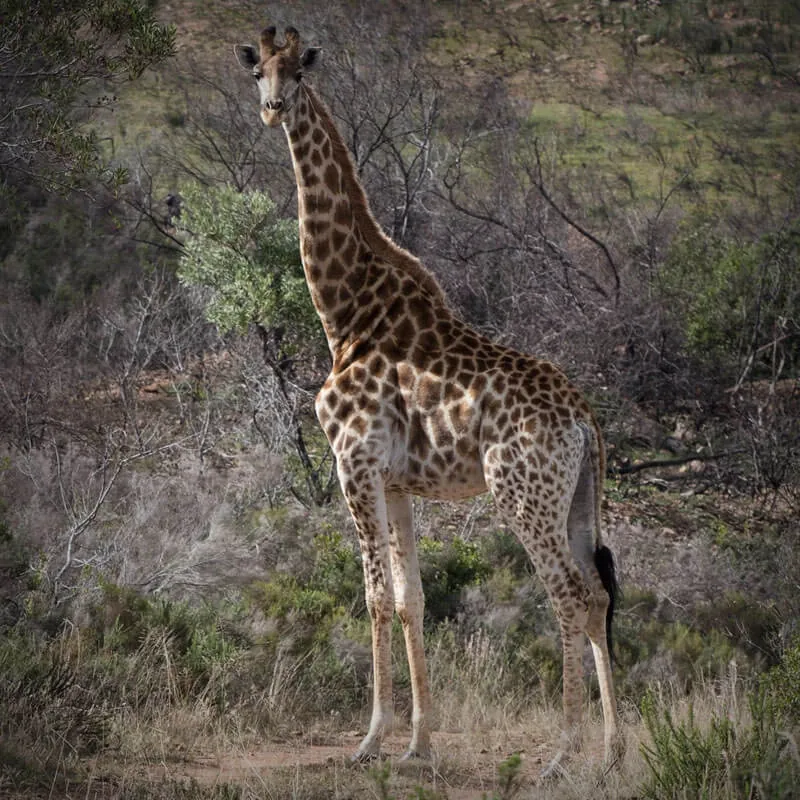Scientific Name:
Giraffa camelopardalis
The giraffe (Giraffa camelopardalis) is an African even-toed ungulate mammal, the tallest living terrestrial animal and the largest ruminant. Its species name refers to its camel-like appearance and the patches of color on its fur. Its chief distinguishing characteristics are its extremely long neck and legs, its horn-like ossicones, and its distinctive coat patterns. It is classified under the family Giraffidae, along with its closest extant relative, the okapi. The nine subspecies are distinguished by their coat patterns.
Appearance
Fully grown giraffes stand 5–6 m (16–20 ft) tall, with males taller than females. Despite its long neck and legs, the giraffe’s body is relatively short. Located at both sides of the head, the giraffe’s large, bulging eyes give it good all-round vision from its great height. The giraffe’s prehensile tongue is about 50 cm (20 in) long. The coat has dark blotches or patches (which can be orange, chestnut, brown, or nearly black in color) separated by light hair (usually white or cream in color). Male giraffes become darker as they age.
Diet
Their primary food source is acacia leaves, which they browse at heights most other herbivores cannot reach.
Habitat
The giraffe’s scattered range extends from Chad in the north to South Africa in the south, and from Niger in the west to Somalia in the east. Giraffes usually inhabit savannas, grasslands, and open woodlands.
